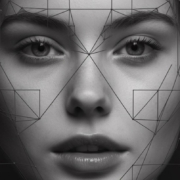Germany has undergone significant changes over the last ten years, which are also reflected in the police crime statistics (PKS). These statistics serve as a comprehensive mirror of crime development and prevention in the country. A comparison between the years 2013 and 2023 not only reveals changes in crime rates but also profound societal developments and adaptations within the police force itself.
The Bavarian police have added a new, powerful tool to their arsenal: Palantir software. Known from the Batman universe, Gotham – the technology behind Palantir – analyzes unfathomable amounts of data and discovers connections that would be invisible to the human eye. However, with the deployment of this technology in Bavaria, the question arises whether we are on the path to a transparent society.
Given the legal questions we often face, especially regarding the quantification of “very likely” in percentages, I would like to explain why I, as an expert, have decided to avoid such numerical assessments. The probability of identity or non-identity is deliberately formulated as a verbal predicate because biostatistical calculations are problematic. There is a lack of sufficiently extensive and validated databases that consider various ethnic origins and age groups. Moreover, the reference images were not created under standardized conditions. Therefore, the “actual” expression of features is often not discernible, and calculations based on the “apparent” expression could lead to erroneous conclusions.
The assertion that the Federal Office for the Protection of the Constitution in Germany is a neutral institution seems like a beautiful illusion that crumbles upon closer examination. It turns out that the views and reports expressed by this office are primarily shaped by the directives of political decision-makers and bodies. This situation reaches a bitter climax when an Interior Minister uses the Federal Office for the Protection of the Constitution to suppress press freedom and other opinions on crucial topics. Such deployment of this office against the Constitution and free speech is alarming. The “Federal Office for the Protection of the Constitution” is being misused to curtail constitutional rights. A society must be assured that its intelligence services act neutrally; otherwise, democracy suffers, like a tree whose roots have been severed.
Imagine, I recently faced the challenge of sending all my passwords as part of my digital legacy. Being a technology and security aficionado, I was well aware that conventional messenger services hardly provide the necessary level of security anymore. So I thought to myself: “Why not encrypt the text before sending and protect my sensitive data from the prying eyes of unauthorized individuals?”
Imagine a world where your brain is not a fixed entity, but a constantly evolving network that reshapes itself in response to every new challenge and sensory input. This fascinating adaptability, known as neuroplasticity, not only underpins our everyday learning but also forms the basis of our remarkable ability to recognize faces. What was once thought to be an innate gift can actually be honed and perfected over time, much like a muscle that grows stronger with exercise. Numerous studies, ranging from the work of Pascal-Leone and colleagues to recent field research with elite police units, have demonstrated that the brain’s capacity for reorganization through synaptic remodeling and the formation of new neuronal circuits plays a critical role in enhancing our ability to distinguish even the most subtle facial features.
Folds and wrinkles, the subtle manifestations of skin morphology, offer an extraordinary range of unique identification features. They serve as precise reference points between the identifying model and the subject to be identified. The complexity and individuality of these features allow for remarkable precision in identification.
Photos and videos are essential components of our modern society and serve as indispensable evidence in law enforcement, journalism, and science. However, the authenticity of these media is increasingly questioned due to manipulations and forgeries. One key technology to verify the genuineness of visual material is the analysis of shadows, a fascinating process that often unfolds like a gripping crime thriller. This technique examines the light sources and their interaction with the objects in the image to identify anomalies that could indicate manipulations.
Corpse stains, also known as livores, form a complex mosaic of discolorations that has left the forensic world in awe for centuries. These postmortem markings, which occur as blood accumulates in the lowest parts of the body after death, offer a treasure trove of information invaluable for determining the time of death and conducting extensive forensic investigations. But what exactly lies behind these enigmatic stains that appear like silent witnesses after a person’s passing?
The Polizeiliche Kriminalstatistik Deutschlands (PKS) 2022, an annual compendium compiled by German police authorities, serves as an indispensable tool for examining the evolution of crime in Germany. This current edition of the PKS presents not only a sober aggregation of offenses in numerical form but also a narrative mosaic that vividly sketches the country’s transformed criminal landscape. At its core lies the phenomenon of rising crime and the role of asylum seekers in this intricate context.









